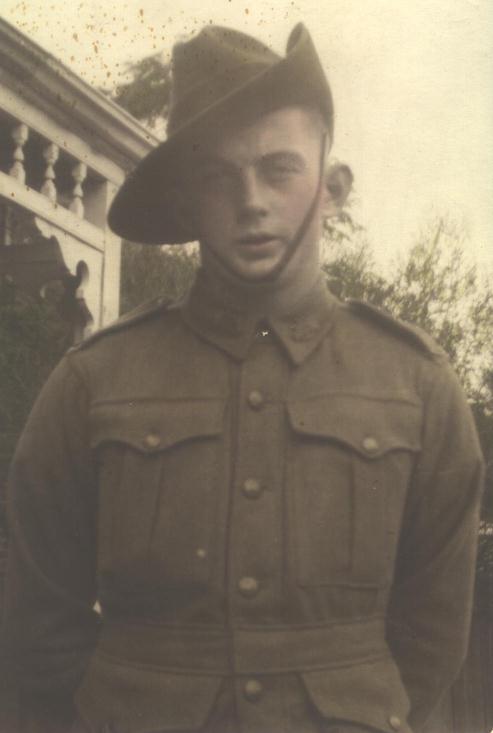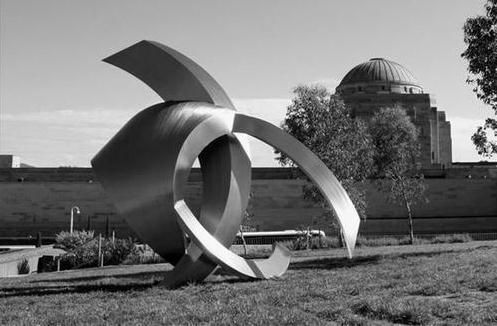|
Edward John Brown was born to Lindsay George Brown, aka Lindsay Murdock Graham Snushall, and Margaret Ellen Brown (nee McGlenchy) on 27 July 1921 at Yalgoo, Western Australia. In the absence of a Birth Certificate, there is some confusion regarding John's date of birth. The Birth Certificate of John's younger brother Harold, who was born on 17 October 1931 states, that at that time, John was 9 years old. If this information, as provided by his parents, were correct, John's date of birth would be 27 July 1922. To confuse matters further, when John enlisted into the Militia Forces in 1939 he gave his date of birth as 27 July 1921. Later, when he transferred to the Australian Infantry Forces (AIF) in 1941 he gave his date of birth as 27 July 1920. was born to Lindsay George Brown, aka Lindsay Murdock Graham Snushall, and Margaret Ellen Brown (nee McGlenchy) on 27 July 1921 at Yalgoo, Western Australia. In the absence of a Birth Certificate, there is some confusion regarding John's date of birth. The Birth Certificate of John's younger brother Harold, who was born on 17 October 1931 states, that at that time, John was 9 years old. If this information, as provided by his parents, were correct, John's date of birth would be 27 July 1922. To confuse matters further, when John enlisted into the Militia Forces in 1939 he gave his date of birth as 27 July 1921. Later, when he transferred to the Australian Infantry Forces (AIF) in 1941 he gave his date of birth as 27 July 1920.
John was a bricklayer at the time that he enlisted for a three-year term into the Militia Forces on 15 August 1939. He later transferred to the AIF on 14 January 1941.
At the time of both enlistments, John gave his next of kin as his mother, Margaret Ellen Brown, living in North Perth WA. In a letter dated 6 June 1942 the Army was advised that she had remarried (Margaret Ellen Gardiner) and now resided in Cranbrook WA.
After training for some months John was granted 10 days pre-embarkation leave on 20 June 1941. John embarked for service overseas on 12 July 1941, arriving 24 July 1941, shortly before his birthday.
John was posted as missing in action on 23 August 1942, believed POW at Rabaul. The family was later informed, about October 1945, that it was believed that John died whilst being transported as a POW on the Japanese ship “SS Montevideo Maru”, which was sunk by allies on 1st July 1942. The prisoners carried on this enemy ship were mainly troops of the AIF 2/22nd Battalion and John’s commando unit, the 1st Independent Company.
Following is a report of the sinking of the SS Montevideo Maru:
Sunk by the American submarine USS Sturgeon” (Lieutenant Commander Wright) off Cape Bojidoru, Luzon, in the Philippines. She was heading for Japan from Rabaul, New Britain, carrying 1,035 Australian nationals including 845 army prisoners of war, the bulk of the 2/22 Batalion, Australian 8th. Division (Lark Force ). The 7,267 ton passenger ship had left Rabaul on the 22nd of June, unescorted, and unmarked when at 0225 hrs on July 1st, was hit by two torpedoes from a four torpedo spread from the Sturgeon at a range of 4,000 yards. Developing a list to starboard, the ship sank stern first at 0240. Later reports indicated that 845 army personnel, 208 civilian POWs, including twenty missionaries, who had been living and working on New Britain when the Japanese came, 71 Japanese crew and 62 naval guards (a total of 1,186) made up the ships complement. Among the 208 civilian prisoners were the 36 crewmembers of the Swedish cargo ship Herstein which was bombed and set on fire while loading copra in Matupi Harbour. From the Allied contingent on board, there were no survivors.
During service, John earned the following medals:
- 1939/45 Star
- Pacific Star
- War Medal 1939/45
- Australian Service Medal 1939/45

John's name is included on a War Memorial at Rabaul, New Guinea. The Memorial is situated in Rabaul (Bita Paka) War Cemetery, which is located approximately 50 kilometres south of Rabaul, and approximately 5 kilometres south-west of Kokopo.
The Rabaul Memorial commemorates over 1,200 members of the Australian Army (including personnel of the New Guinea and Papuan local forces and constabulary) and the Royal Australian Air Force, who lost their lives in New Britain and New Ireland in January and February 1942, and in New Britain from November 1944 to August 1945, and who have no known grave.
In January 1942, after three weeks of air bombardment, Rabaul was attacked by the Japanese from the sea, and overwhelming odds soon broke the defence. It is estimated that against the original garrison of 1,500 the Japanese landed 17000 men in the immediate vicinity of Rabaul. Though forced to withdraw the garrison left between 3,000 and 4,000 Japanese dead on the shores of the bay and the harbour. The defenders split into small groups and while some managed to escape by sea a great number were killed or captured. Of the latter many were murdered, and most of the remainder were drowned when the ship taking them, together with some 200 civilians, to the Philippine Islands was torpedoed and sunk
.
|